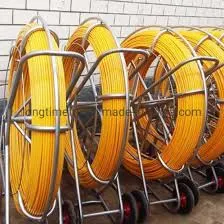
-
 Afrikaans
Afrikaans -
 Albanian
Albanian -
 Amharic
Amharic -
 Arabic
Arabic -
 Armenian
Armenian -
 Azerbaijani
Azerbaijani -
 Basque
Basque -
 Belarusian
Belarusian -
 Bengali
Bengali -
 Bosnian
Bosnian -
 Bulgarian
Bulgarian -
 Catalan
Catalan -
 Cebuano
Cebuano -
 Corsican
Corsican -
 Croatian
Croatian -
 Czech
Czech -
 Danish
Danish -
 Dutch
Dutch -
 English
English -
 Esperanto
Esperanto -
 Estonian
Estonian -
 Finnish
Finnish -
 French
French -
 Frisian
Frisian -
 Galician
Galician -
 Georgian
Georgian -
 German
German -
 Greek
Greek -
 Gujarati
Gujarati -
 Haitian Creole
Haitian Creole -
 hausa
hausa -
 hawaiian
hawaiian -
 Hebrew
Hebrew -
 Hindi
Hindi -
 Miao
Miao -
 Hungarian
Hungarian -
 Icelandic
Icelandic -
 igbo
igbo -
 Indonesian
Indonesian -
 irish
irish -
 Italian
Italian -
 Japanese
Japanese -
 Javanese
Javanese -
 Kannada
Kannada -
 kazakh
kazakh -
 Khmer
Khmer -
 Rwandese
Rwandese -
 Korean
Korean -
 Kurdish
Kurdish -
 Kyrgyz
Kyrgyz -
 Lao
Lao -
 Latin
Latin -
 Latvian
Latvian -
 Lithuanian
Lithuanian -
 Luxembourgish
Luxembourgish -
 Macedonian
Macedonian -
 Malgashi
Malgashi -
 Malay
Malay -
 Malayalam
Malayalam -
 Maltese
Maltese -
 Maori
Maori -
 Marathi
Marathi -
 Mongolian
Mongolian -
 Myanmar
Myanmar -
 Nepali
Nepali -
 Norwegian
Norwegian -
 Norwegian
Norwegian -
 Occitan
Occitan -
 Pashto
Pashto -
 Persian
Persian -
 Polish
Polish -
 Portuguese
Portuguese -
 Punjabi
Punjabi -
 Romanian
Romanian -
 Russian
Russian -
 Samoan
Samoan -
 Scottish Gaelic
Scottish Gaelic -
 Serbian
Serbian -
 Sesotho
Sesotho -
 Shona
Shona -
 Sindhi
Sindhi -
 Sinhala
Sinhala -
 Slovak
Slovak -
 Slovenian
Slovenian -
 Somali
Somali -
 Spanish
Spanish -
 Sundanese
Sundanese -
 Swahili
Swahili -
 Swedish
Swedish -
 Tagalog
Tagalog -
 Tajik
Tajik -
 Tamil
Tamil -
 Tatar
Tatar -
 Telugu
Telugu -
 Thai
Thai -
 Turkish
Turkish -
 Turkmen
Turkmen -
 Ukrainian
Ukrainian -
 Urdu
Urdu -
 Uighur
Uighur -
 Uzbek
Uzbek -
 Vietnamese
Vietnamese -
 Welsh
Welsh -
 Bantu
Bantu -
 Yiddish
Yiddish -
 Yoruba
Yoruba -
 Zulu
Zulu


sep . 06, 2024 00:49 Back to list
EUPHER Ground Rod - Reliable Grounding Solutions for Safety and Performance
The eupher ground rod is an essential component in various electrical systems, serving as a pivotal part of grounding and earthing processes. It is designed to facilitate the safe dissipation of electrical energy into the ground, ensuring that any excess energy caused by faults, lightning strikes, or surges is effectively redirected away from sensitive equipment and structures. This protective measure helps prevent damage and ensures the safety of both people and property.
A eupher ground rod is typically made from conductive materials like copper or galvanized steel, which are chosen for their durability and excellent conductivity
. The rod's length and diameter can vary depending on the specific application, but the most common lengths range from 8 to 10 feet. The installation of a ground rod requires careful planning to ensure that it reaches a suitable depth for optimal electrical conductivity, which usually involves driving it into the ground until the top is flush with the surface.The importance of grounding cannot be overstated. In residential settings, grounding systems help protect homes from electrical surges caused by lightning or equipment malfunctions, safeguarding appliances and reducing the risk of fire. In industrial and commercial environments, grounding is crucial for maintaining equipment integrity and ensuring the safety of personnel who work with or around electrical systems. Grounding not only protects equipment but also mitigates the risk of electrical shocks to individuals, making it a fundamental aspect of electrical safety.
eupher ground rod

Moreover, the eupher ground rod plays a vital role in compliance with electrical codes and standards. Most electrical codes require proper grounding for both new and existing electrical installations, thus necessitating the use of reliable grounding rods. Installers and electricians must be knowledgeable about local codes to ensure compliance, as improper grounding can lead to serious hazards.
In conclusion, the eupher ground rod is a critical element in establishing a safe electrical environment across various settings. Its primary function of grounding protects both people and equipment from the potentially harmful effects of electrical surges. Given the increasing reliance on electrical systems in our daily lives, understanding the significance of grounding and the proper installation of ground rods is essential for achieving safety and compliance within electrical frameworks. As technology advances, ongoing education and adherence to best practices will remain crucial in maintaining electrical safety standards.
Latest news
duct-rodders-and-conduit-rod-tools
NewsAug.22,2025
ratchet-pullers-and-wire-tightening-tools
NewsAug.22,2025
chain-ratchet-pullers-and-hoist-solutions
NewsAug.22,2025
telescopic-hot-stick-for-electrical-and-high-voltage-use
NewsAug.22,2025
cable-clamp-and-insulated-cable-clamp-systems
NewsAug.22,2025
duct-rodder-conduit-rodder-and-cable-solutions
NewsAug.22,2025








